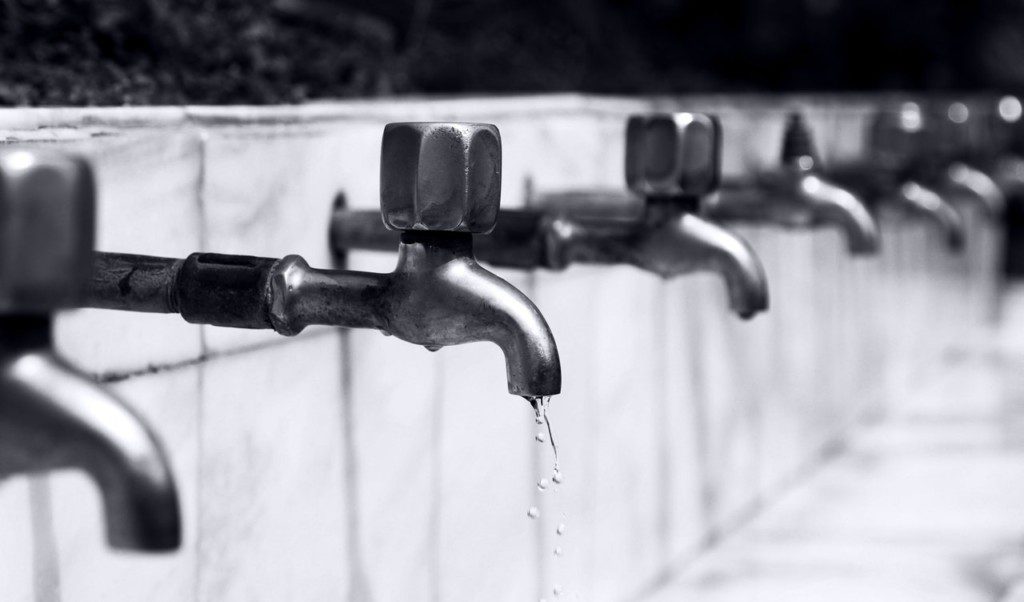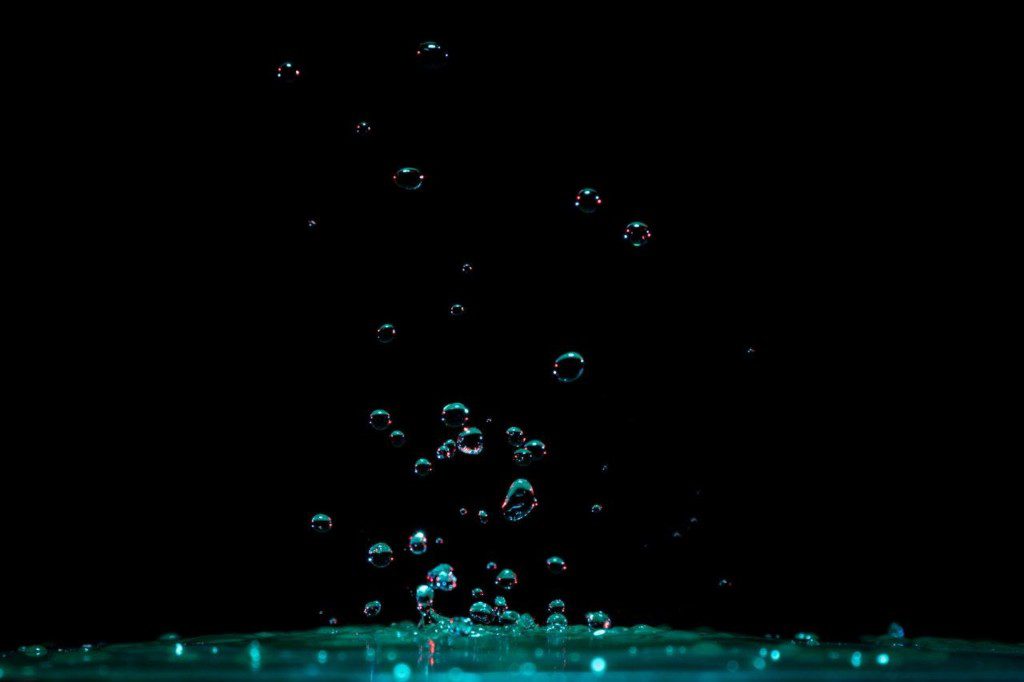When you want to identify the quality of water, it’s common for the amount of total dissolved solids in the water to be measured. This measurement will make it easier for you to determine how contaminated the water is and what level of purification is necessary to get rid of the contaminants. High amounts of total dissolved solids equate to more contaminated water. Total dissolved solids are the amount of dissolved solids that can be found in water. When water is pure, it shouldn’t contain any total dissolved solids.
These solids are typically introduced to the water by the activities that a person does, which include using pesticides and herbicides. TDS can also originate from industrial wastewater, natural sources, urban runoff, sewage, and chemicals that are used during the extensive water treatment process. Some of the natural environmental features that cause an increase in TDS concentration include salt deposits, carbonate deposits, mineral springs, deicing agents, and agricultural runoff.
Total dissolved solids are usually comprised of inorganic salts and a small portion of organic matter. The types of inorganic salts that dissolve in the water include sulfates, potassium, calcium, magnesium, chlorides, and bicarbonates. TDS concentrations should be at a certain level for every type of water. For instance, high TDS concentrations in seawater could place marine life at risk. If water hasn’t been properly filtered before being sent to residential homes, people could end up drinking water that contains high amounts of contaminants and inorganic salts, which can lead to numerous health issues. This article takes a closer look at total dissolved solids and the tools you can use to measure TDS concentrations.
How Can a Water Treatment Facility Remove TDS?
 The purpose of a wastewater treatment facility is to clean water and sewage so that most of the total dissolved solids within these substances can be filtered out before the water is sent back into the environment. These facilities remove the vast majority of pollutants and solids while also breaking down any organic matter that’s present in the water, which restores the oxygen content for the treated water.
The purpose of a wastewater treatment facility is to clean water and sewage so that most of the total dissolved solids within these substances can be filtered out before the water is sent back into the environment. These facilities remove the vast majority of pollutants and solids while also breaking down any organic matter that’s present in the water, which restores the oxygen content for the treated water.
These are many processes that water treatment facilities can use to remove total dissolved solids from water, the primary of which include reverse osmosis, water softeners, and distillation units. The exact method that you decide to use depends on which dissolved solids are found in the water. If TDS concentrations are high largely due to iron, calcium, and magnesium, a water softener may be enough to substantially lower the amount of total dissolved solids in your water. On the other hand, the presence of potassium, sodium, and chloride typically require a reverse osmosis system.
The reverse osmosis process involves filtering water through a semi-permeable membrane, which ensures that most of the total dissolved solids in the water are removed. This particular system is able to get rid of any harmful contaminants that may be in your water, which include lead and salt. Keep in mind that RO systems get rid of healthy minerals as well, the primary of which are magnesium and calcium.
If you want to make sure that the filtered water remains healthy to drink once filtered, it’s recommended that you pair your RO system with a calcium and magnesium mineral bed, which will add these minerals back to the water after any dangerous contaminants have been removed. When using a mineral bed, the pH of the water will increase, which reduces the acidity of the water as well as the corrosive nature of the substance. While acidic water is beneficial in some situations, it’s better if the water that you drink contains a neutral or alkaline pH.
Guidelines for PH
It’s possible to test the pH of water with a basic pH sensor, which will give you readings that range from 0-14. Anything below 7.0 is considered to be acidic, which indicates that the water is corrosive and contains elevated levels of contaminants and total dissolved solids. If the readings are above 7.0, the water is alkaline, which ensures that the water is safe to drink. However, you don’t necessarily want to drink water that has extremely high pH readings. The optimal pH range for drinking water is anywhere from 6.5-7.5.
While pure water usually has a pH level of 7.0, the presence of any contaminants in the water will invariably cause the pH level to lower. Substances like battery acid and sulfuric acid have pH readings that extend from 0-1. On the other hand, bleach and liquid drain cleaner solutions have pH readings that range from 13-14.
Importance of Monitoring PH and TDS
As mentioned previously, a high concentration of total dissolved solids in the water indicates that pH levels are low. If you’re measuring a water source and receive high TDS readings or low pH readings, it’s very likely that harmful contaminants are present in the water. Keep in mind that both of these readings are easy to obtain with pH sensors and similar tools. Observing both of these metrics will allow you to keep track of the quality of a water source.
If you take weekly readings of your water and find that the pH of the water is decreasing alongside an increase in TDS concentrations, it’s likely that pollution is reaching your water supply for some reason. Identifying these changes should help you take the necessary steps to determine the cause of the pollution and to eliminate it. Taking regular measurements is also a great way to improve the quality of your water before the total dissolved solids become too high or the water becomes too acidic.
Sensors provide precise readings, which means that you’ll know when the pH level of the water shifts from 7.3 to 7.1. Even though this change is small, it could point towards your water being polluted for some reason, which gives you the perfect opportunity to improve the quality of the water without needing to take drastic measures. If you don’t measure the TDS concentration and pH levels on a regular basis, anyone in your home or facility may be using acidic water without even knowing it.
Acidic water is harmful for any number of reasons. When contaminated water is used in a boiler or cooling tower, high TDS concentrations may bring about fouling and scale development in the system, which can reduce efficiency and waste an ample sum of money. As for drinking water, high TDS levels can be unhealthy for anyone who consumes the water. If the total dissolved solids are mainly comprised of heavy metals, anyone who drinks the water could experience a shortness of breath, abdominal pain, diarrhea, nausea, and even organ damage.
Measuring TDS Levels In Your Water
 Different guidelines have been used to dictate what TDS levels should be for human consumption. In high-quality drinking water, TDS levels should be at 300 mg/L or less. If the readings come in at between 300-600 mg/L, the water quality would be good. Anything between 600-900 is considered to be poor, while any readings that come in over 1,200 mg/L are believed to be unacceptable for drinking water. Keep in mind that TDS can also be measured in ppm or parts per million. TDS concentrations and pH levels are both considered when assessing the quality of water.
Different guidelines have been used to dictate what TDS levels should be for human consumption. In high-quality drinking water, TDS levels should be at 300 mg/L or less. If the readings come in at between 300-600 mg/L, the water quality would be good. Anything between 600-900 is considered to be poor, while any readings that come in over 1,200 mg/L are believed to be unacceptable for drinking water. Keep in mind that TDS can also be measured in ppm or parts per million. TDS concentrations and pH levels are both considered when assessing the quality of water.
In the U.S., the EPA states that TDS is a secondary standard, which makes it a voluntary guidelines when determining the quality of drinking water. The reason that total dissolved solids are used as a secondary standard by the EPA is because TDS levels more often affect the aesthetic characteristics of water. The contaminants that make up total dissolved solids are considered to be ionized contaminants, which also include zinc, copper, manganese, and iron.
The two things that elevated TDS levels indicate include:
- Aesthetic problems with the water – The odor and taste could be affected by differing TDS concentrations
- Nuisance problems with the water – High TDS levels could indicate that high amounts of toxic metals like copper can be found in the water, which may be considered health hazards
Sensorex Products to Measure Total Dissolved Solids
There are three distinct Sensorex products that you can use to measure total dissolved solids, which include:
- SensoLab Total Dissolved Solids Benchtop Kit – This kit gives you everything you need to measure the TDS and conductivity of water. Along with the CM1000 conductivity meter, the kit also includes a measurement scale for your samples.
- SensoLab Total Dissolved Solids Meter – This meter is ideal for measuring the conductivity or TDS of laboratory samples. The inclusion of four cell constants allows you to measure a wide range of different samples for precise readings.
- Sensorex Contacting Conductivity Sensor – This potent conductivity and TDS sensor is outfitted with multiple cell constants, the ability to increase pressure and temperature ratings, and multiple options for insertion lengths.
No matter what kind of sample you want to measure, TDS and conductivity sensors will allow you to obtain accurate readings that can help you determine the quality of water and take the appropriate measures. If the readings are too low, you’ll know that the water is acidic and needs to be filtered.





